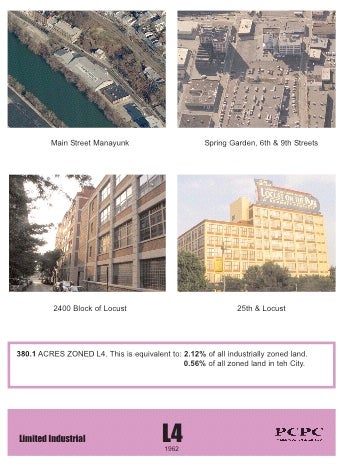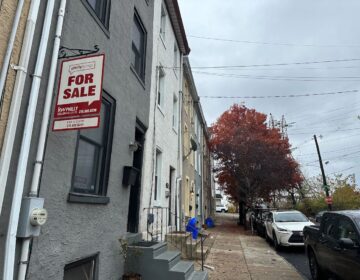Zoning 101: understanding the code

The Philadelphia Zoning Code is a dense read. It takes a trained mind to sort through all the legalese and cross-references. Builders get confused, zoning officers can’t agree and even members of the new Zoning Code Commission can’t make the translation.
That’s why PlanPhilly is presenting this Visual Guide to Zoning, an easy way for regular folks to understand the city’s code.
Below you’ll find clickable PDF files that explain each of the city’s 56 zoning designations with photos, maps, diagrams and regulations.
Developed by the Planning Commission, they form an essential guide for anyone trying to keep abreast of the ongoing effort to reform Philly’s zoning.
Refer to http://www.zoningmatters.org/index.html for comprehensive coverage of the commission.
Residential
In the alphabet soup of zoning, residential classes always start with an R, followed by a number. A low number means low density: R1 allows for single family homes with garages. A higher number usually, but not always, means higher density, multi-family housing. The apartment houses on the south side of Rittenhouse Square, for example, are R16.
A class with an “A” typically indicates an amended version. In residential, the amendment was usually made to disallow conversion into multi-unit apartments.
Single Family Residential click here
The numbers continue to climb for multi-family housing. R16, for instance, includes the tall apartment houses on Rittenhouse Square. And some non-residential uses are frequently allowed. A recent example of note is the new Perelman addition to the Philadelphia Museum of Art, which lives in a district designated R15.
Multi-Family Residential click here
Residential Commercial click here
The RC designation represents a rare breed of large-lot residential developments with limited commercial uses. This allows for structures like the new Venice Island lofts in Manayunk, but also includes master planned communities such as Naval Square on Grays Ferry Ave. Hotels also fit in here.
For whatever reason, RC does not encompass “Mom and Pop” corner stores, probably the most common mix of residential and commercial uses. They’re handled under C1 and C2.
Commercial click here
Here, too, a higher number indicates a bigger structure. C1 allows for your local dry cleaner, while C5 allows for the Comcast Center. Defying that logic is the oddball C7, which mostly allows for gas stations and strip malls in the Great Northeast.
The commercial classes are the scene of “zoning bonuses,” in which the city allows a developer to build extra bulk if they provide public amenities such as ground floor retail or outdoor plazas for lunchtime sandwich munching.
Industrial click here
The industrial districts of the code come in three flavors: L, G and LR.
The L stands for Limited Industrial and allows for distribution warehouses and the manufacture of a bizarrely detailed list of items including rope, twine, leather gloves, statuary, macaroni and, of course, spaghetti – all industries with low impact on the neighbors.
The G stands for General Industrial, and allows for the making of considerably more complex items such as apparel, electric motors, aircraft, cars, pickled vegetables and brandy.
And LR stands for Least Restrictive, which is why one city zoning expert called “the big nasty.” Here you can get away with all of it: slaughtering hogs, galvanizing metals, crushing cars, as well as the manufacture of cement, chemicals, rubber tires and even howitzer artillery pieces.
The diverse family of industrial designations also has two cousins: PI is a special zone for Port Industrial uses, and FDC allows the city’s Food Distribution Center to operate within the law.
Other districts click here
Matt Blanchard, a former Philadelphia Inquirer reporter, can be reached at blanchard.matt@gmail.com
WHYY is your source for fact-based, in-depth journalism and information. As a nonprofit organization, we rely on financial support from readers like you. Please give today.






